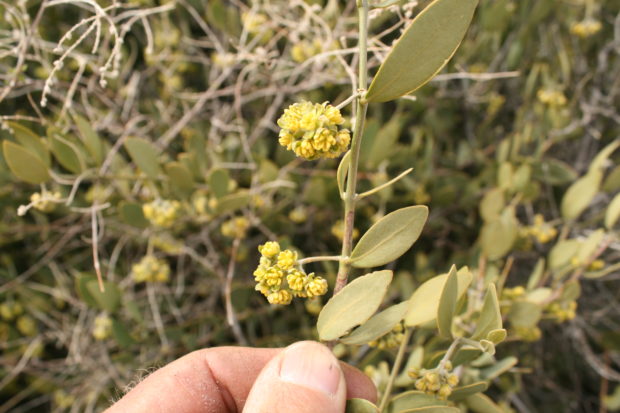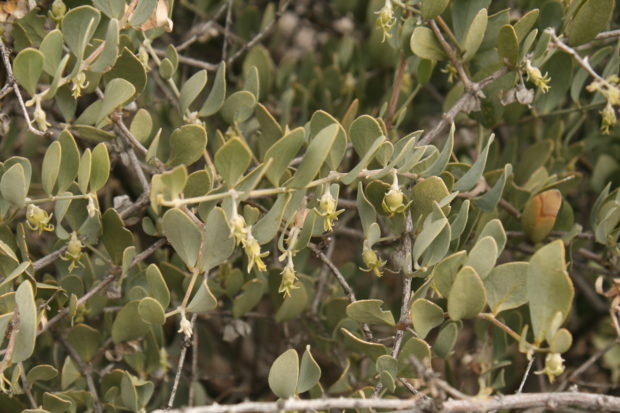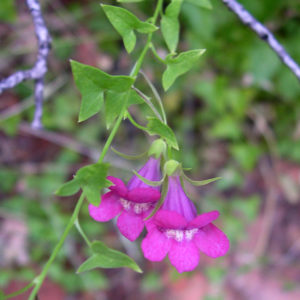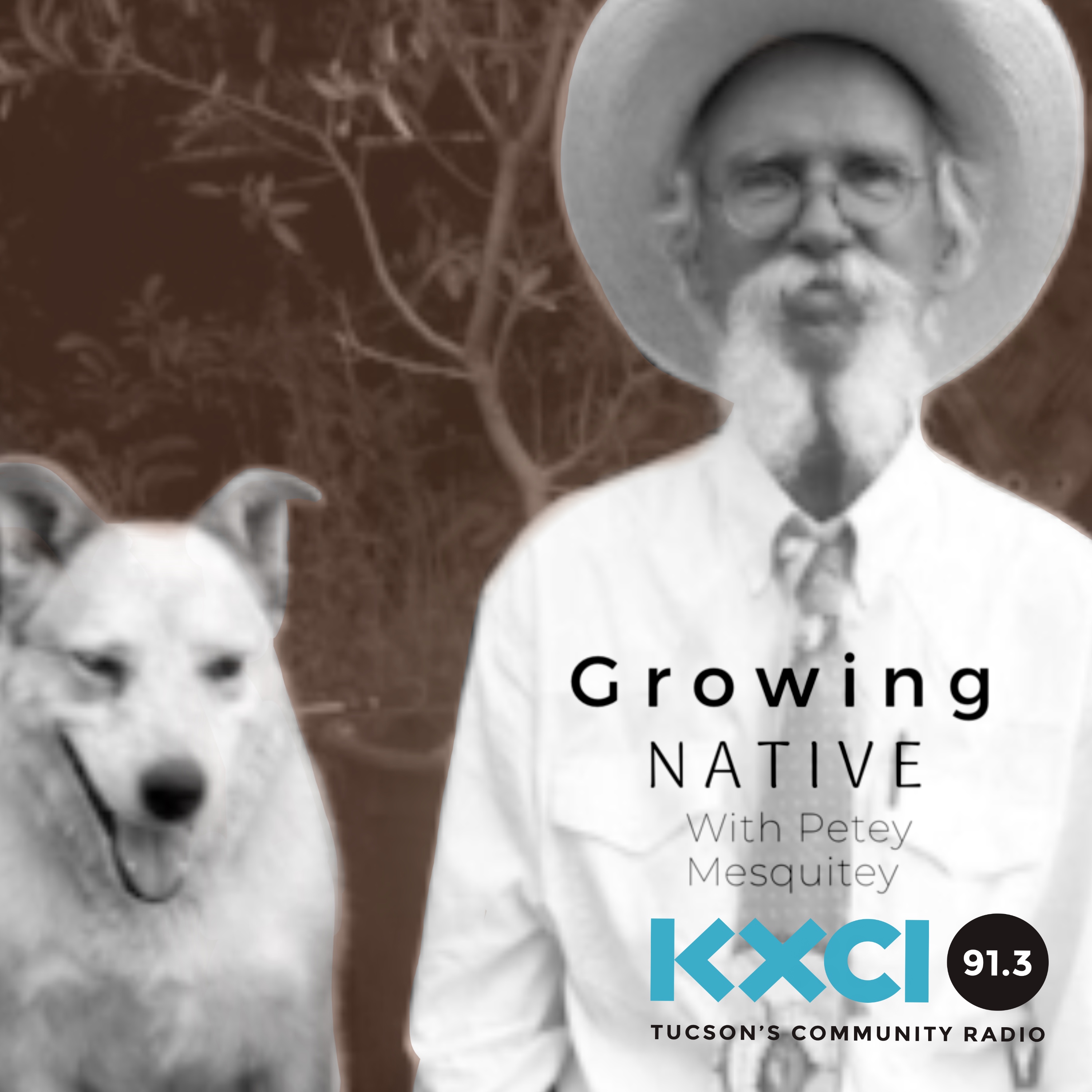Jojoba is also called goat-nut and pig-nut, deer-nut or to plant geeks like myself, Simmondsia chinensis. The foliage and stems are browsed by wildlife and domestic critters. The nuts are eaten as well, as the common names indicate, and the nuts are edible for humans too, but just a few at a time as too many will act as a laxative. That’s not hard to understand considering the liquid wax found in the seed. Jojoba is an important commercial plant because of that liquid wax, but don’t forget it is also a beautiful wild evergreen shrub. Even Arizona Flora says “it is a rather handsome shrub”. Yeah, it is. And by the way, jojoba is now in its own family, Simmondsiaceae, and not in the boxwood family, Buxaceae. I do love the story of how jojoba’s Latinized name came about and I’m glad I finally got to tell it.
The photos are mine and taken in the Dos Cabezas Mountains. Jojoba is dioecious, so male and female flowers are found on separate plants and I thought you’d like to see the male and female flowers.



March really is the month of change around all of us in the borderlands of southeastern Arizona. How fun to celebrate the arrival of...

When the Mesquitey family lived near Tucson I worked in a crazy wonderful nursery that was at the base of A-Mountain (Sentinel Peak) right...

Monarda species are endemic to North America. As near as I can figure there are fifteen or sixteen species and four of those are...